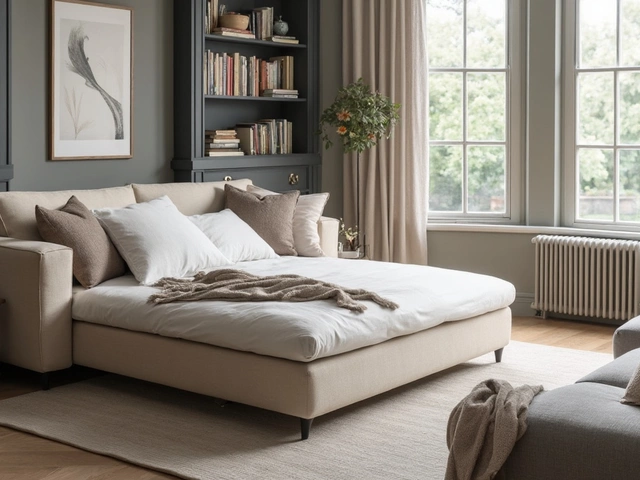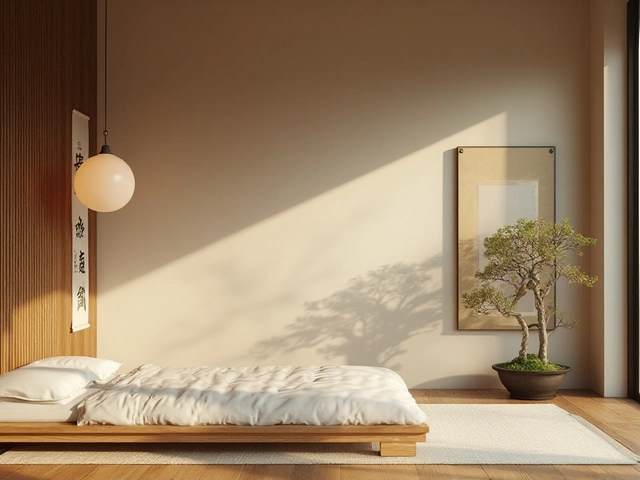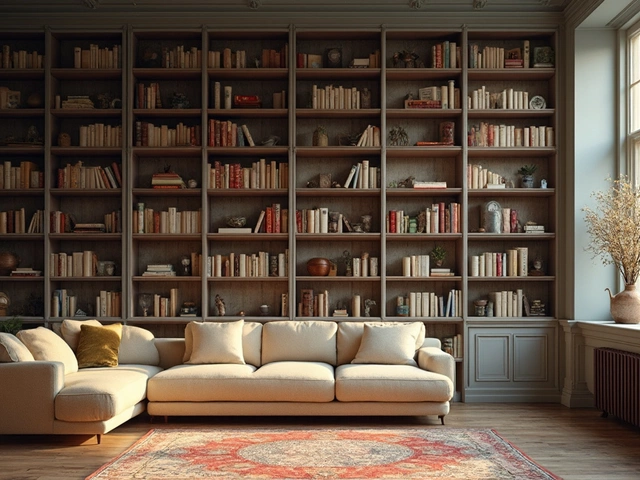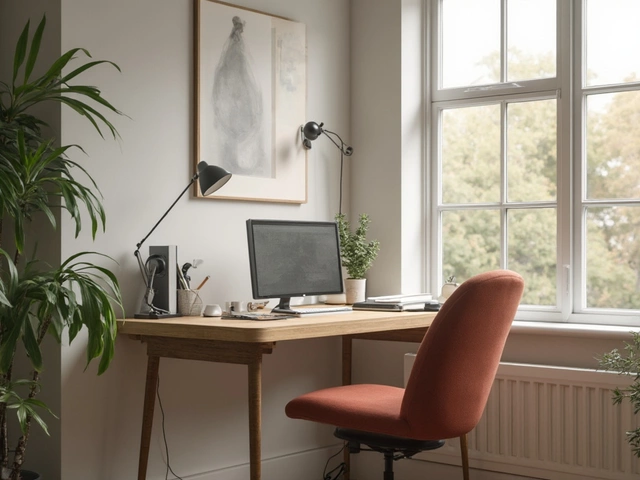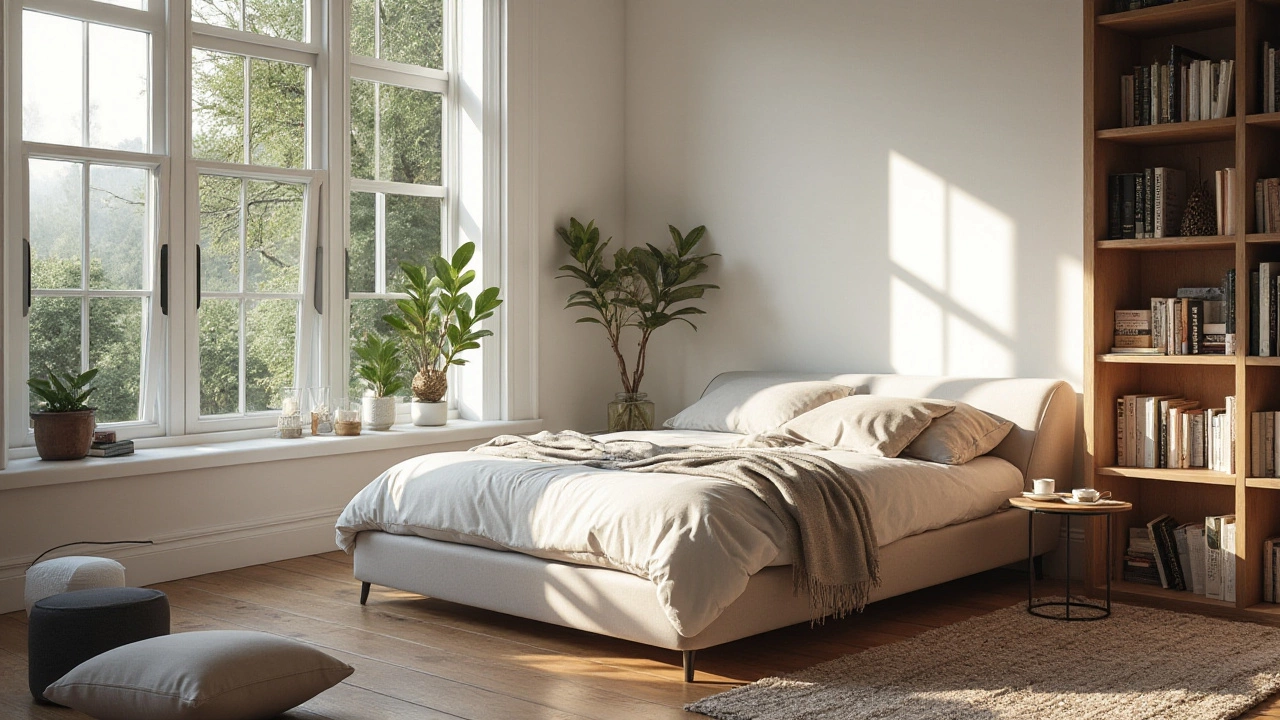 26
Oct,2024
26
Oct,2024
There's something undeniably charming about the thought of drifting off to sleep surrounded by your favorite tales and tomes. For some, having a bookcase in the bedroom is both a pleasure and a necessity, bringing literature to the forefront of their relaxation spaces. It not only adds character to the room, but also keeps beloved books within easy reach for those late-night reading sessions.
However, incorporating a bookcase into your bedroom setup isn't as straightforward as one might think. Like any piece of furniture, it requires a bit of planning and consideration. This involves pondering over things like the available space, the overall aesthetic of your room, and even the effect it might have on your sleeping environment.
Before you decide to install one, let’s explore some aspects you may want to consider. We’ll dive into the various benefits, highlight potential challenges, and offer some creative ideas to seamlessly integrate a bookcase into your bedroom setting. By the end of this thinking-through process, you’ll have a clearer picture of whether a bookcase in your bedroom is indeed the right move for you.
- Evaluating the Benefits of a Bookcase in the Bedroom
- Potential Drawbacks and Considerations
- Choosing the Right Bookcase Style
- Placement Ideas and Space Optimization Tips
- Personalizing Your Bedroom Library
Evaluating the Benefits of a Bookcase in the Bedroom
When considering whether to bring a bookcase into the bedroom, there are numerous advantages that can make it an appealing choice for many. First, let's talk about convenience. For those who are avid readers, having easy access to their favorite literature without even needing to leave the comfort of their bed can be an amazing advantage. Imagine being able to reach out and grab the next chapter in a thrilling series during a weekend morning or a cozy night in. This makes reading more integrated into daily life, encouraging a literary habit that can be both enriching and entertaining.
In addition to practical convenience, a bookcase can serve as a statement piece within your bedroom's decor. It adds depth to the visual palette of the room, providing an opportunity to display both books and other decorative items. Whether it's family photos, travel souvenirs, or that little trinket that means something special to you, a bookcase offers a platform to express personality and memories. In this way, bookshelves can become part of the art and storytelling within your own space. Additionally, having books within sight can also positively impact your mental state, as it enables easy access to the stories and knowledge they contain. According to research, being surrounded by books may boost cognitive functions and foster a home environment that promotes learning.
"A room without books is like a body without a soul," noted Roman philosopher, Cicero, suggesting the intimate connection between our living spaces and personal growth.
Space utilization is another critical aspect to consider. In rooms where space is a premium, savvy homeowners can utilize tall, thin bookcases to maximize vertical space without encroaching on valuable floor areas. This strategy allows for great storage potential without the room feeling cramped or overstuffed. Moreover, strategically chosen bookcases can augment existing home decor themes, harmonizing with styles from modern minimalism to classic coziness. Beyond mere aesthetics, bookcases can offer a practical solution, potentially serving as dividers in larger rooms to create a more intimate reading nook or cozy corner.
Now, delve into the sensory aspects books introduce into a bedroom. The visual appeal is one thing, but there's also a distinct warmth and texture that books bring into space. The colors, the subtle wear on the spines, they tell stories beyond their pages. This impact isn't just physical—it's emotional. Having a collection of books close at hand offers reassurance and nostalgia, keeping wisdom and adventure within arm's reach. Moreover, bookcases double as sound absorbents, subtly improving acoustics in a room, which can make the space feel more serene and quieter—perfect for a restful environment where sleep quality is prioritized.
Potential Drawbacks and Considerations
While the allure of a bookcase in the bedroom is appealing, it's crucial to acknowledge some potential hindrances. For starters, space is often a premium in bedrooms, particularly in urban environments like Melbourne. Introducing a bookcase could clutter the room, making it feel cramped or even claustrophobic. Before committing, measure your space meticulously and consider using multi-functional furniture to keep things open. Another point to ponder is the aesthetic alignment—a traditional wooden bookcase might clash with modern minimalistic décor, and it's important that the bookcase reinforces, rather than detracts from, your room’s visual harmony.
Psychological factors can also play a role. For some, a line of books can feel like a looming to-do list, more of a stressor than a cozy addition. To avoid this, ensure that your bookcase is a symbol of joy rather than pressure. Behavioral experts suggest that cluttered environments can lead to increased levels of cortisol, the stress hormone, which is something you'd ideally want to minimize in a place dedicated to rest. If you find yourself distracted by unfinished stories more than you are relaxed, this could be a red flag against the bedroom bookcase.
There’s also the matter of dust and cleanliness. Books are known dust collectors, and in a bedroom environment, this could exacerbate allergies or affect your air quality, which might complicate your sleep. Regular cleaning is a must, and if possible, aim for enclosed bookcases to minimize exposure. However, Mary McFadden, an interior design expert, notes, “A thoughtfully curated bookcase can be as visually nourishing as a piece of art.”
Stocking your favorite books, or even a few well-placed decorative items, can make the bookcase feel less like a hazard and more like a core element of your bedroom's design.
Security is another consideration. If you have younger children or pets, tall bookcases could pose a tipping hazard. Securing them to the wall is a necessary step for safety. In terms of financial investment, a high-quality bookcase can be an expensive addition. Depending on your preferences, styles, and materials, the price can vary significantly. Good planning once again comes into play. Allocating budget wisely to incorporate a well-suited bookcase may require sacrificing other decorative elements, so choose accordingly.
Finally, think long-term. Your current layout might accommodate a bookcase splendidly, but what about future changes? Life is dynamic—space needs and personal taste evolve. A versatile approach, perhaps opting for modular shelving, could circumvent the need for future upheavals. Navigating these considerations with care could spell the difference between a bedroom-enhancing choice and a decision laden with regret. By weighing these potential drawbacks carefully, you can decide where a bookcase truly fits into your home.
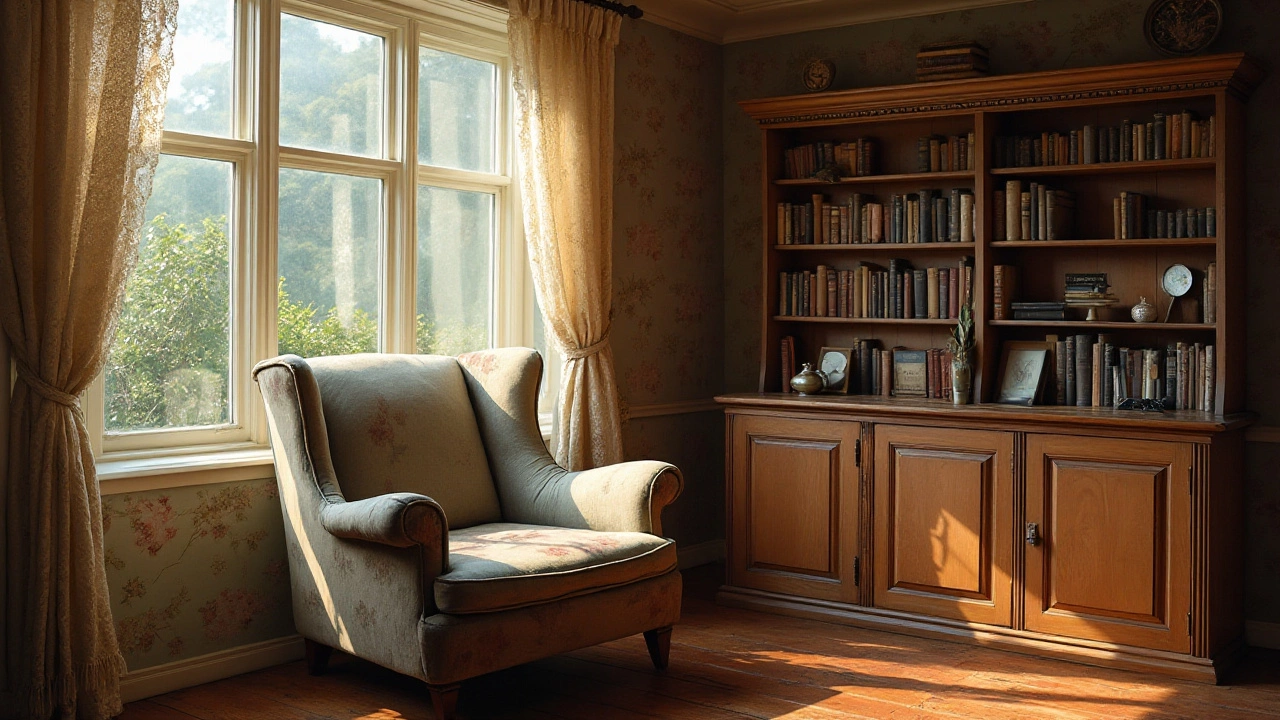
Choosing the Right Bookcase Style
When it comes to adorning your bedroom with a bookcase, it's not just about the books themselves but how the structure complements your personal style. The right bookcase can transform a mundane sleeping area into an inviting space where every corner oozes personal taste and warmth. To this end, style, material, and color are pivotal in making a bookcase work harmoniously with the rest of your bedroom decor. Consider what narrative you’d like your room to tell. Are you drawn to rustic charm or sleek modernity? These choices will guide you toward narrowing down the perfect bookcase style.
Start by evaluating the materials available. Wood has long been a favorite due to its durability and classic appeal. Mahogany or oak can add an air of timeless elegance, albeit at a slightly steeper price. MDF and laminate, on the other hand, offer cost-effective alternatives that mimic wood at first glance while providing versatility in terms of color and finish. Also, think about metal, which can lend a contemporary feel, especially in industrial-styled bedrooms. Pay attention to the color—dark finishes offer a more traditional vibe, whereas lighter ones might boost a sense of space in smaller rooms.
If you have an eclectic collection that includes both books and decorative items, open shelving might be your best bet. It allows for an engaging display where bits and pieces of your personality can shine through, showcasing family photographs and travel keepsakes alongside your favorite anthologies. In contrast, a closed bookcase might serve those who prefer a cleaner, more organized appearance, allowing books and genres to be tucked away neatly behind doors. This style can also protect your precious novels from dust which is an added benefit for those with allergies.
Consider the height and width of your proposed bookcase. A towering bookshelf can accentuate vertical lines in the room, drawing the eye upward, while shorter models are great for smaller spaces or for those who are keen on using the top surface for additional decor. “Books hold us together in a fragile yet unyielding embrace,” says Kate Atkins, an interior design expert. Her words remind us that the bookcase we choose can shape not just our environment, but our experiences too.
The placement of your bookcase should also be strategic. Think about how natural light interacts with the potential location, as direct sunlight can cause fading to both the bookcase and the books themselves. Arranging your bookcase near a reading nook or beside your bed can serve functional purposes, effortlessly blending convenience with comfort. Herdon and Hayley’s 2023 survey of interior designs noted that 45% of respondents valued ease of access to their book selection when contemplating their bedroom setup.
Ultimately, choosing the right bookcase style involves more than just aesthetics—it’s about crafting your sanctuary. Only you know the balance you wish to strike between utility, beauty, and serenity. With a bit of thought and creativity, you can create a space that is not only attractive but also feels inherently like home.
Placement Ideas and Space Optimization Tips
Incorporating a bookcase into your bedroom requires creativity and a touch of cleverness, especially when working within spatial constraints. A great starting point is to assess the current layout and available wall space. Experts often recommend starting with the walls that are least utilized. This could be the wall adjacent to your bed, or even above a bedside table, where a slim, vertical shelving unit can fit snugly without overwhelming the room.
Think about vertical space as a valuable asset. Tall and narrow bookcases not only save space but also draw the eye upwards, creating a sense of height and airiness in a room. If height isn't an issue, a shorter, wider case under a window can provide a cozy nook for reading. Be mindful of not blocking natural light sources though, as the influx of daylight is vital in keeping a bedroom bright and pleasant.
The back of a door or a small unused corner can also be transformed into a shelving haven. With the right fixtures and sturdy shelving, this often-overlooked space can accommodate a surprising number of books and decorative items. A corner unit, for instance, is a smart choice for those with limited space, turning underutilized corners into literary hotspots without intruding too much into walking areas.
For those particularly tight on space, multifunctional furniture can be the key. Consider furniture pieces that combine storage and function, like a bookcase with a sliding panel that also serves as a headboard or a room divider. This way, you maximize your storage utility while also potentially creating distinct areas in your room, adding a bit of privacy or separation when needed.
As interior designer Nate Berkus once said, "Your home should tell the story of who you are, and be a collection of what you love." Integrating a bookcase into the bedroom can be a subtle yet powerful expression of personality.
Lastly, don't forget about the style and color of the bookcase you choose. Ideally, it should complement the current decor theme without clashing. Choosing a light color for your bookcase can make the room feel open and airy, while adding a vibrant blue or a rich mahogany can introduce warmth and charm. Consider personalizing it with decorative items or art pieces that reflect your own style, making your bedroom not just a space for rest, but a haven of personal expression and peaceful retreat.

Personalizing Your Bedroom Library
Creating a bookcase in your bedroom that feels both functional and personal might seem like quite the task, but with a few thoughtful touches, it can become a cherished corner of your home. Begin by identifying what this space means to you. Is it a sanctuary of stories after a long day? Or perhaps it's a display for your most prized literary possessions? Let the purpose of your book-filled haven guide your decisions on how you personalize this space.
One way to start is by choosing a color scheme or theme that resonates with your personal style. If your room is a serene blue, consider selecting a bookshelf in a soft wood finish to complement the tranquility of the space. For a more eclectic look, mix and match different materials and textures. Grouping some golden book spines together can add a touch of elegance and warmth. Integrate your room's existing design elements into your shelving by adding personal trinkets, small plants, or mementos amidst the books. This not only breaks the monotony of rows of spines but also adds character to your bedroom.
Your bedroom library can also reflect your interests and hobbies beyond books. Incorporating some artwork or personal photos alongside your collection adds layers of personality. Perhaps you have a passion for travel; include souvenirs or picture frames with snapshots from your adventures. Consider spacing these items among the books to create visual interest. Using a combination of horizontal and vertical book arrangements can also make the display more dynamic. According to renowned interior designer Nate Berkus, "Your home should tell the story of who you are and be a collection of what you love."
For a more interactive experience, consider adding a reading nook or cozy chair next to your bookcase. A soft, inviting space with a plush chair and a small side table for a warm cup of tea or coffee elevates the experience of having a library in your bedroom. Soft lighting, perhaps a small lamp or a string of twinkling lights, can create an inviting atmosphere for those late-night reading sessions. Having a reading corner nearby not only enhances the area around your bookcase but also encourages the habit of making time for books in your everyday life.
Beyond aesthetics, consider the practical side of a bookcase in your bedroom. Be sure to arrange your books in a way that suits your reading habits. Group series together, or perhaps arrange by genre or even mood. Feel free to change it up as your collection grows and evolves – personalization is about what makes you feel comfortable and reflects who you are at this moment in time. Don't feel limited by traditional layouts; stagger your book stacking diagonally or use small bookends to create distinctions in your shelving.
Your personalized bookcase is more than just a storage unit; it's a reflection of your unique journey and tastes. Remember, the goal is to create a space that invites you to delve into the stories you love, where your personality shines as bright as the books that call it home.
